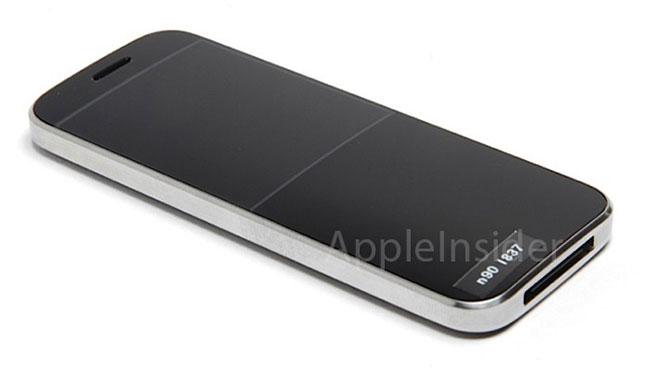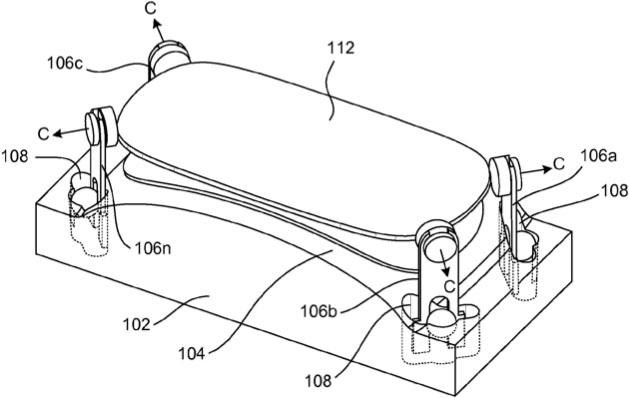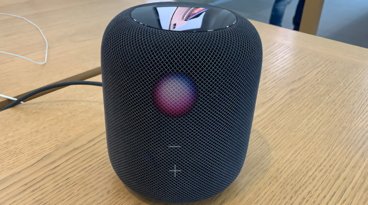Apple granted rights to new process for creating high-quality curved glass
Last updated
While curved glass enclosures have emerged as a hallmark of Samsung's latest smartphone designs, it was revealed this week that Apple has also expressed interest in the subject, developing a safer and more cost-effective manufacturing process that would allow the company to create thinner, higher-quality convex enclosure for devices as small as an iPhone but as large as a Thunderbolt display.
In a patent filing awarded to the company this week, Apple notes that traditional "dropout" and "vacuum" processes for slumping or shaping glass over a convex mold during a heating process present a number of drawbacks due to the fixed alignment systems for which they rely. These include the formation of "perimetrical flanges" on the edges of the glass that then need to be ground away, unintentional stretches or cracks in the glass that result from the rapid heating process, and the use of potentially harmful chemicals and gas.
Most dropout processes also involve heating the glass relatively rapidly, which has proven effective for molding relatively thick glass in excess of half an inch. But the process can often prove detrimental to the quality of relatively thin glass, which can lead to lower yields and waste. As such, Apple says these methods add unnecessary complexity, cost, time and labor to the glass shaping processes.
Instead, Apple's patented process hinges on a alignment system that's configured to move away from the glass as the temperature increases during the slumping process, as opposed to an alignment system that remains affixed to the material throughout the entire process. In this way, the glass is free to bend around the mold without interference — a method Apple says will allow it to produce higher quality, thinner convex glass more safely and cost effectively.
Still, it's important to note that the advent of the filing, dubbed "Glass alignment for high temperature processes," doesn't necessarily indicate that we'll see an iPhone hit the market with a screen similar to those found on Samsung's Galaxy Nexus and Nexus S. It's only an indication that Apple has explored the idea in earnest in the past.
For instance, Apple's ongoing patent war with Samsung recently saw the disclosure of several dozen prototype iPhone and iPad designs that the company considered but ultimately decided against. One of these, "Proto 0335" or "N90" (pictured above), shows a candy bar-shaped iPhone with what appears to be a slightly convex glass screen. Thus, it's possible the patent, originally submitted in March of 2009, was filed during the design process of that prototype.
Alternatively, the potential also exists for Apple to leverage the patented process for curved glass on future products that have yet come to light. For example, the company wrote in the filing that its technique is not only suitable for glass covers assembled in small form factor electronic devices like mobile phones and media players, but also user input devices such as mice or trackpads, personal digital assistants, remote controls, and glass displays for other relatively larger form factor electronic devices such as "portable computers, tablet computers, displays, monitors, and televisions."
 Katie Marsal
Katie Marsal















 Amber Neely
Amber Neely
 Thomas Sibilly
Thomas Sibilly
 AppleInsider Staff
AppleInsider Staff
 William Gallagher
William Gallagher
 Malcolm Owen
Malcolm Owen
 Christine McKee
Christine McKee









71 Comments
Talk about a frivolous patent¡
[quote name="Tallest Skil" url="/t/155196/apple-granted-rights-to-new-process-for-creating-high-quality-curved-glass#post_2251165"]Talk about a frivolous patent¡ [/quote] Really? So you're an expert in forming glass, too? The key part is here: [quote]Instead, Apple's patented process hinges on a alignment system that's configured to move away from the glass as the temperature increases during the slumping process, as opposed to an alignment system that remains affixed to the material throughout the entire process.[/quote] Having spent part of my career in glass and ceramic forming processes, I'm not aware of existing systems that do that. And while it would be very difficult to implement, the potential advantages are huge.
"So Apple has patented curved surfaces now?" /s
I can't see this being used on any glass area that has a display that requires visually perfect image. If we're talking about the forehead and chin of the iPhone glass or the small bezel sides, then sure, but not for the display itself. Apple likes to test out ideas in small scale and capacity (e.g.: LiquidMetal SIM ejector) so perhaps we might see a curved GG2 remote control (if we assume it's for something with a display, unlike a mouse) for an Apple TV or HDTV that would display capacitance buttons as needed all under a sleek, curved glass BT remote control. [quote name="jragosta" url="/t/155196/apple-granted-rights-to-new-process-for-creating-high-quality-curved-glass#post_2251166"] Really? So you're an expert in forming glass, too?[/quote] • http://en.wikipedia.org/wiki/Irony_punctuation#Temherte_slaq.C3.AE
• http://en.wikipedia.org/wiki/Irony_punctuation#Temherte_slaq.C3.AE
He's just sore because he apparently can't read what I've written in another thread, so he's taking it out on me in every post since.